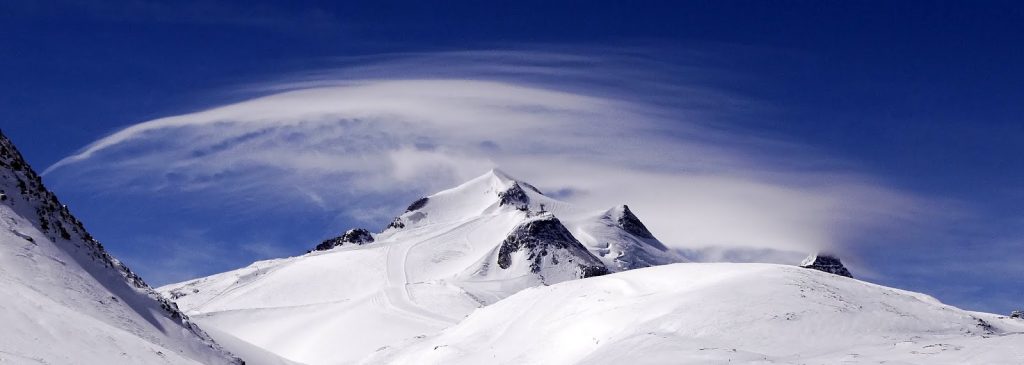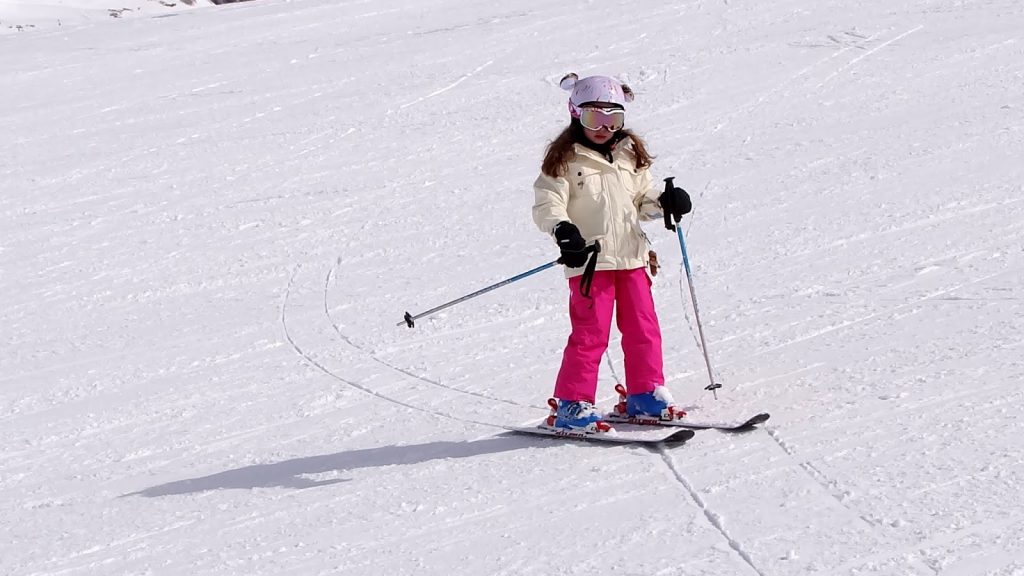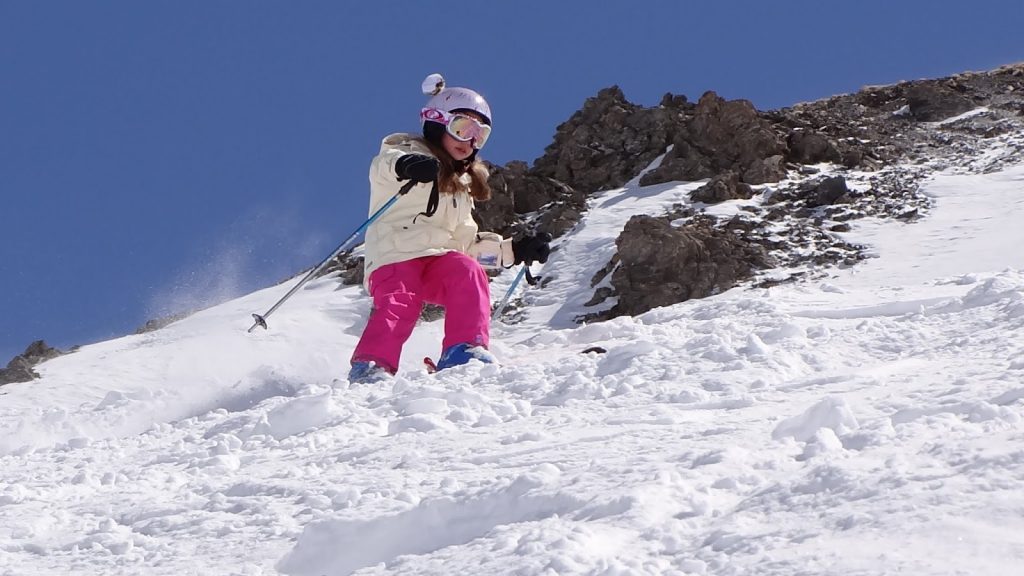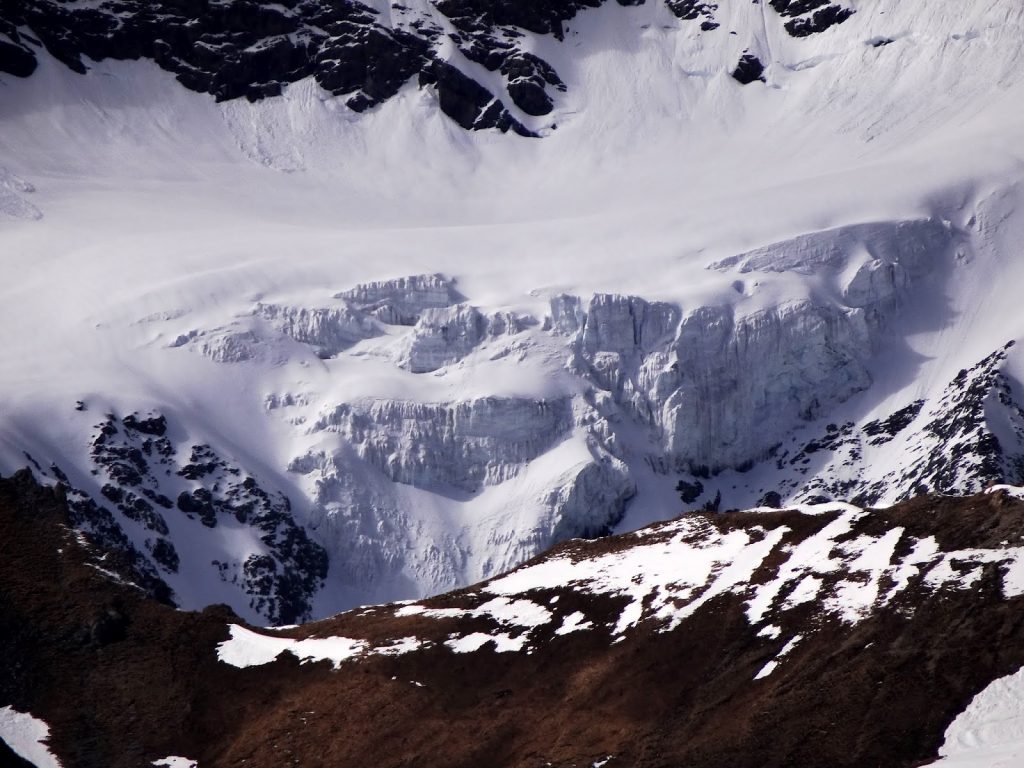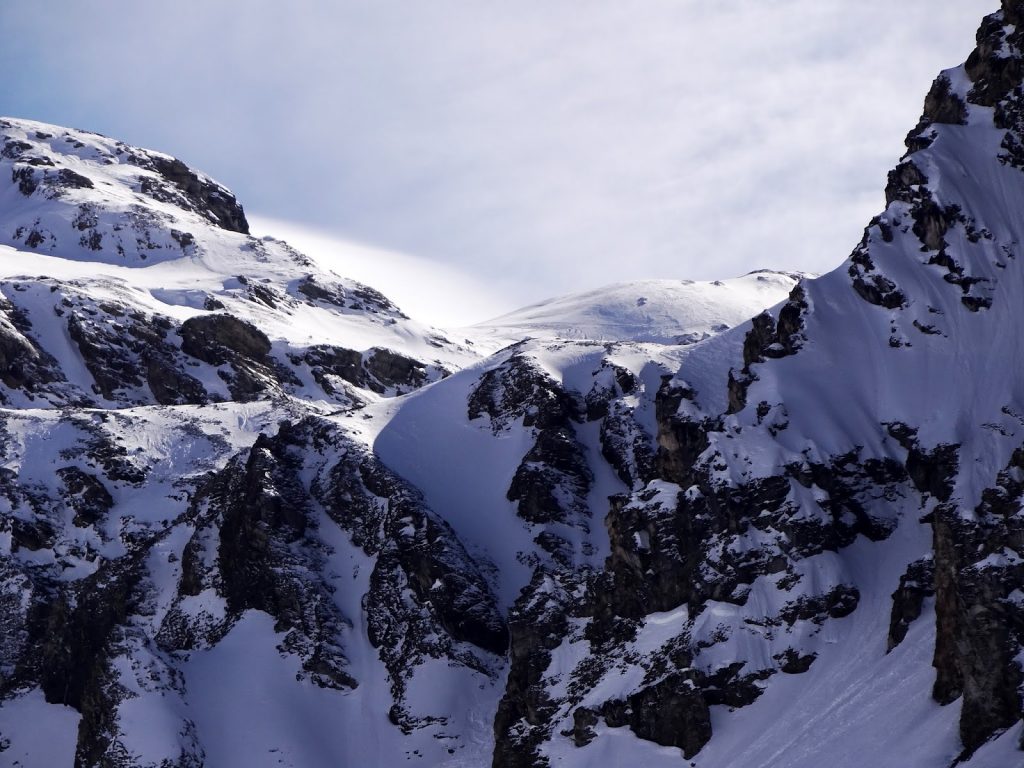Lenticular wave cloud over the Grande Motte, Tignes
Derin -Morning
During our warm up run we played a little in some fresh off-piste snow. Derin was happy to experiment in it – always focusing on touching the front of the boots.
Spreading Butter
The serious stuff started again when we went back to sideslipping and all of its variations. This was taken into pivoting and Derin’s coordination was much better than yesterday. She could manage to use the ski pole for support and stand on the uphill leg alone to carry out the complete pivot. It’s really important to be totally on the one leg at this stage because otherwise the lower leg will almost certainly be used for support so that the uphill leg will be pushed out into a stem – the exact opposite of what we require. I wanted Derin to begin to get a sense of everything “pulling inwards” into the turn. Using my ski pole I had Derin pull against it with the inside of her ski tip it to feel the adductor muscles clearly in one leg. I then explained that when the ski is pulled inwards it resembles spreading butter on bread. The front of the ski is pulled into the turn this way. For the time being I’m not worried about Derin “mastering” the pivot but the goal is to develop a general coordination that works for pivoting and everything else – and get everything moving “inwards”.
Two ways to ski
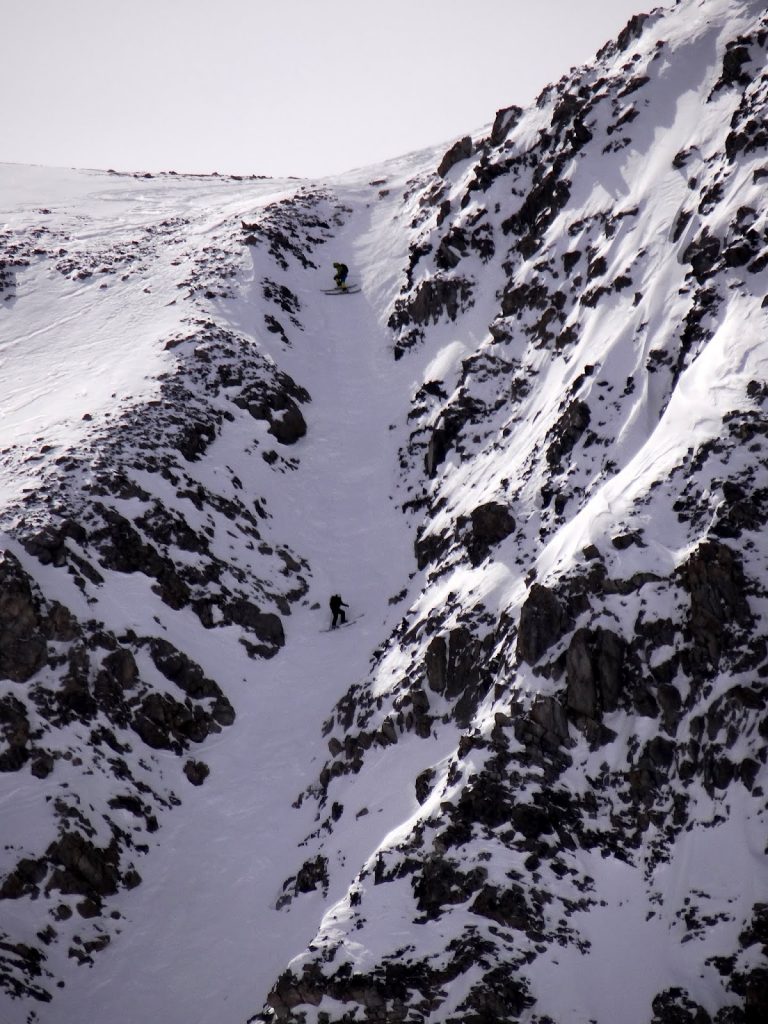 Derin needed to understand why we had to “pivot” so I pointed out two skiers in Pisteur’s coulour. Those skiers were forced to sideslip all of the first section and at all times keep their skis below them, together and on the uphill edges to control speed. Even if they managed to turn they would have to keep all of those things the same and that is what the pivot can do for you. It’s about staying in the fall line and keeping the speed at a minimum.
Derin needed to understand why we had to “pivot” so I pointed out two skiers in Pisteur’s coulour. Those skiers were forced to sideslip all of the first section and at all times keep their skis below them, together and on the uphill edges to control speed. Even if they managed to turn they would have to keep all of those things the same and that is what the pivot can do for you. It’s about staying in the fall line and keeping the speed at a minimum.
When speed is needed and there is enough space and good snow, then we can carve – which means using the inside edges all the way around the turn – and running along the edges instead of sideslipping . This time the turn begins on the downhill edges and there is an acceleration. Derin practiced making gentle arcs on her edges by rolling her feet. Using poles for support she then changed the edges while stationary and facing across the hill. This develops the feel of moving cleanly from edge to edge by moving the body. In the video clip you can see her both pivoting and carving quite nicely – and leaving clean tracks behind in the carve.
Off Piste
All the time Derin was working at moving her body into the turn and pulling inwards with her legs. This was put to the test off-piste in difficult snow over an icy hard base on steep terrain. She skied confidently and was smiling! Falls in this type of snow and terrain are almost always caused by tipping over to the outside of the turn. Derin’s practice at moving “inwards” is what made her secure.
The video is in the order filmed during the day – for both Derin and Defne.
Defne – Afternoon
Our warm up run consisted of carving and working on the three focuses from yesterday – shin, hip and pelvis.
Developing the Pivot
Defne was also given the explanation of the “two ways to ski” so that she could more clearly see the purpose of the pivot and where it is used. I physically aided her though a few pivots so that she could feel how tight and quickly they could work, making clear that the aim is to be able to do that on her own.
When on two skis Defne made the classic error of stemming – but when on one ski she pivoted very well. I explained that this could help to relax the legs when skiing by making the entry into normal turns easier through delaying the use of the inside edge and the subsequent build up of pressure.
It was still important not to completely forget the other focuses – shin, hip and pelvis while working on pulling the ski inwards and pivoting.
Bumps
We tested out the pivot on some small bumps and Defne did some very clean pivots with the tips and tails in the air. With the bump right under the feet the tips and tails are free to move without resistance. Defne could begin to understand how pivoting works in bumps.
Defne could already carve to some extent and so until now we had only used carving to work on the other focuses. At this point I asked Defne to show me how she should stand to carve. The photograph on the right is what she did – twisting the knee inwards. She said that her French instructor had not explained anything about carving and she thought that she had just copied – but I know for a fact that they systematically instruct to push the knee inwards like this.
I explained to Defne that this is the best way to ensure that she will destroy her knees and join the large number of skiers (mainly women) with broken anterior cruciate ligaments. The trick is to only pull the leg inward laterally with the adductor muscles – exactly as was being done with the pivot but with the ski now blocked on its inside edge so that it can’t slip sideways. This allows the knee to come inwards by a controlled amount and then no further. It also keeps everything mechanically aligned correctly. Defne could feel this straight way and was able to carve with it as is seen in the video above.
The other problem with the knee twisting inwards is that this forces the hip outwards and worsens any hip rotation.
Alignment
With all her body now aligned differently over the past few days Defne’s stance was now becoming strong and functional – so we were able to start to go much faster and she really enjoyed that!
Only the upper body needed some modification for alignment – avoiding the shoulder being pulled backwards along with the hip. One exercise for that is to place both the ski poles to the inside of the turn during the turn, while the outside hip is strongly pulled back – this guarantees a clear twist in the spine and active core. Defne immediately spotted that this would help with clearing slalom poles – which is a correct and very astute observation.
Fear
Defne was clearly afraid at the idea of going into real bumps or off-piste so I assured her that she wasn’t going to be made to do anything she doesn’t want to do. However I explained that it is really important to learn to confront your fears – or instead you learn to be afraid of your own fears. When the time is right and you have enough confidence you have to try to beat your fears. This is how you grow strong. It’s the same with anything challenging – we have to learn to fight and even accept failure as part of learning. I told Defne that we will do those things when she is ready and she will be the one who decides.
Glacier – Mont Pourri (seen from Tignes)
Access to couloirs no 2 & 3, Tignes

